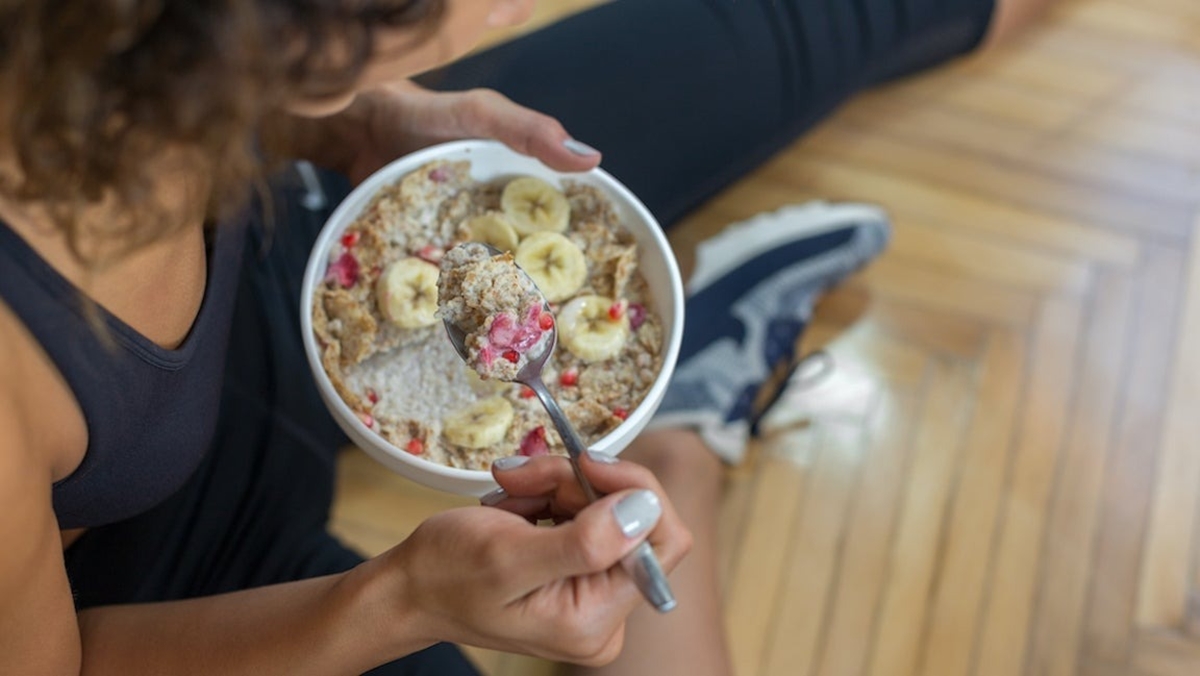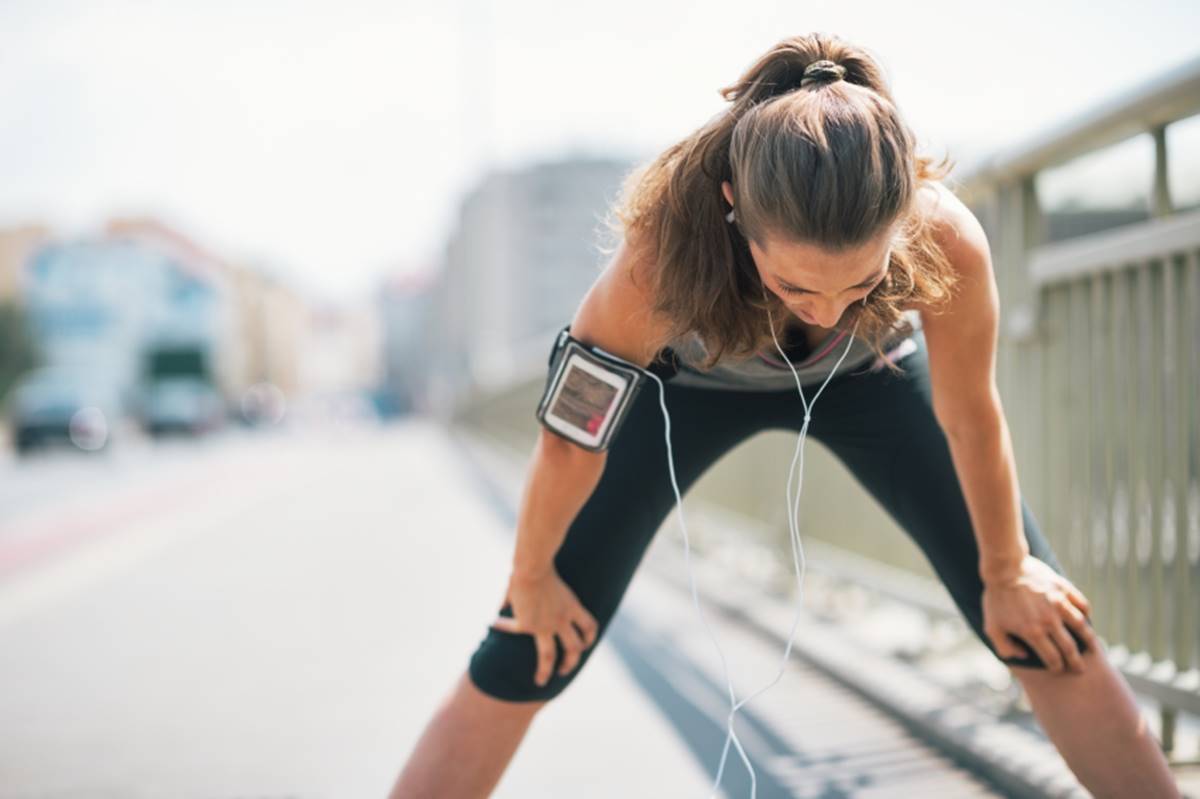Home>Misc>Featured>Why Does Blood Sugar Go Up After Exercise


Featured
Why Does Blood Sugar Go Up After Exercise
Published: September 25, 2023
Discover why blood sugar levels can increase after exercise in this featured article. Find out the causes and how to manage it for better health.
Introduction
Exercise is a vital component of a healthy lifestyle, offering numerous benefits for both physical and mental well-being. Regular physical activity helps to improve cardiovascular health, boost metabolism, and enhance mood. However, for individuals with diabetes, the impact of exercise on blood sugar levels can be a bit more complex.
Understanding how exercise affects blood sugar levels is crucial for individuals with diabetes to effectively manage their condition. Many people are surprised to find that their blood sugar levels can actually increase after physical activity. This can be confusing and may lead to concerns about the overall effectiveness of exercise in managing diabetes.
The goal of this article is to shed light on why blood sugar levels may go up after exercise and to discuss strategies for managing those blood sugar spikes. By gaining a deeper understanding of the physiological processes at play, individuals with diabetes can confidently incorporate exercise into their daily routine while maintaining stable blood sugar levels.
In the following sections, we will explore the role of glucose in exercise, the factors contributing to increased blood sugar levels after exercise, and the impact of exercise intensity and duration on blood sugar. We will also delve into the role of hormones in regulating blood sugar during and after exercise, and discuss strategies to manage blood sugar spikes effectively.
It is important to remember that while exercise can initially cause blood sugar levels to rise, the long-term benefits of regular physical activity outweigh temporary spikes. With proper management and guidance, individuals with diabetes can enjoy the many advantages of exercise while maintaining stable blood sugar levels.
How Exercise Affects Blood Sugar Levels
Exercise has a profound impact on blood sugar levels, primarily by increasing the demand for energy in the muscles. When we engage in physical activity, our muscles use glucose as a source of fuel. As a result, the body responds by releasing glucose from the liver into the bloodstream, causing blood sugar levels to rise.
The increase in blood sugar during exercise is a normal physiological response. It allows the body to meet the heightened energy demands and provides the muscles with the necessary fuel to perform. However, for individuals with diabetes, this rise in blood sugar levels can be more pronounced and take longer to return to normal.
Additionally, how much blood sugar goes up and how long it takes to stabilize can vary depending on several factors. These factors include the type and intensity of exercise, the duration of the activity, and individual differences in insulin sensitivity.
It’s important to note that the effect of exercise on blood sugar levels can be different for those with type 1 diabetes versus type 2 diabetes. In type 1 diabetes, where insulin production is impaired, exercise can lead to a more rapid increase in blood sugar levels. In contrast, individuals with type 2 diabetes may experience a decrease in blood sugar during exercise due to improved insulin sensitivity.
In addition to the immediate impact during exercise, regular physical activity can have long-term effects on blood sugar control. Consistent exercise can improve insulin sensitivity, allowing the body to use insulin more efficiently and reduce blood sugar levels over time. This is particularly beneficial for individuals with type 2 diabetes who often experience insulin resistance.
Overall, the relationship between exercise and blood sugar levels is complex and influenced by various factors. By understanding these dynamics, individuals with diabetes can make informed decisions about their exercise routines and effectively manage their blood sugar levels.
The Role of Glucose in Exercise
Glucose, a type of sugar, serves as the primary energy source for our bodies during exercise. When we engage in physical activity, our muscles require energy to contract and perform their functions. Glucose is broken down in our cells to produce adenosine triphosphate (ATP), the molecule responsible for supplying energy to our muscles.
During exercise, the demand for energy increases, and our bodies respond by releasing glucose from glycogen stores in the liver and muscles. This release is facilitated by hormones like glucagon and adrenaline. The glucose is then transported through the bloodstream to the muscles, where it is converted into ATP to fuel the muscle contractions.
For individuals with diabetes, there may be challenges in the regulation of glucose during exercise. In type 1 diabetes, where insulin production is insufficient, the lack of insulin can impair the transport of glucose into the muscles, leading to elevated blood sugar levels during exercise.
In type 2 diabetes, the body may struggle with insulin resistance, where the cells do not efficiently respond to insulin, leading to reduced glucose uptake in the muscles. However, regular exercise can improve insulin sensitivity and promote glucose uptake, making it an integral part of managing blood sugar levels for individuals with type 2 diabetes.
It’s important to note that the body’s response to glucose during exercise is influenced by several factors, including the intensity and duration of the activity. Higher-intensity exercises may require more glucose, leading to a greater release from glycogen stores. Prolonged endurance exercises can also deplete glycogen stores, resulting in a more significant need for glucose to sustain the activity.
Understanding the role of glucose in exercise helps individuals with diabetes recognize the importance of managing their blood sugar levels before, during, and after physical activity. Monitoring blood sugar levels, adjusting insulin or medication doses, and consuming appropriate pre- and post-workout snacks can help optimize glucose utilization and maintain stable blood sugar levels.
Factors Contributing to Increased Blood Sugar after Exercise
While exercise is generally beneficial for managing blood sugar levels, it’s not uncommon for individuals with diabetes to experience increased blood sugar readings after physical activity. Several factors contribute to these post-exercise blood sugar spikes:
- Glycogen depletion: Intense or prolonged exercise can deplete the glycogen stores in the muscles and liver, leading to an increase in blood sugar levels as the body releases glucose to replenish these stores.
- Counterregulatory hormone response: During exercise, counterregulatory hormones like glucagon and adrenaline are released to help maintain blood sugar levels. These hormones can raise blood sugar by stimulating the liver to produce glucose.
- Delayed insulin response: Some individuals with diabetes may experience a delayed insulin response to exercise, leading to a temporary increase in blood sugar levels. This delay can be caused by factors such as insulin resistance or the time it takes for the body to transport insulin to the muscles.
- Increased cortisol levels: Intense exercise can trigger the release of cortisol, a stress hormone that can raise blood sugar levels by encouraging the liver to release more glucose into the bloodstream.
It’s important to note that the magnitude of the blood sugar increase can vary depending on individual factors, such as insulin sensitivity, exercise intensity, and duration. While some individuals may experience significant spikes, others may have more moderate increases.
To minimize blood sugar spikes after exercise, it’s essential to have a well-rounded approach to diabetes management. Monitoring blood sugar levels frequently, both during and after exercise, can help individuals identify any patterns or trends. Adjusting insulin or medication doses, if necessary, and timing meals and snacks appropriately can also help regulate blood sugar levels better.
Additionally, staying hydrated and consuming a balanced meal or snack that combines carbohydrates, protein, and healthy fats after exercise can help prevent excessive blood sugar increases while providing adequate nutrients for muscle recovery.
While increased blood sugar after exercise can be frustrating, it’s crucial to maintain a positive mindset and understand that regular physical activity still offers numerous long-term benefits for diabetes management. With proper monitoring and adjustment, individuals with diabetes can find a balance that works for them and enjoy the positive impact of exercise on their overall health.
The Impact of Intensity and Duration of Exercise on Blood Sugar
The intensity and duration of exercise play a significant role in determining the effect on blood sugar levels. Understanding how these factors influence blood sugar can help individuals with diabetes optimize their exercise routines for better glucose management.
Intensity: The intensity of exercise refers to how hard you are working during physical activity. High-intensity exercises, such as sprinting or HIIT (High-Intensity Interval Training), can cause a rapid increase in blood sugar levels. This is because the body relies heavily on anaerobic metabolism, which converts glycogen into glucose for energy. As a result, blood sugar levels may rise during and immediately after high-intensity workouts. On the other hand, moderate-intensity exercises, like brisk walking or cycling, tend to have a less dramatic impact on blood sugar levels. However, it is important to note that individual responses to exercise intensity can vary.
Duration: The duration of exercise refers to the length of time spent engaging in physical activity. Prolonged endurance exercises, such as long-distance running or cycling, can deplete glycogen stores over time. This depletion triggers the release of glucose from the liver, potentially causing an increase in blood sugar levels during and after the activity. For shorter-duration exercises, the impact on blood sugar may be less significant.
An important consideration when managing blood sugar levels during exercise is the balance between intensity and duration. High-intensity, short-duration exercises may result in a more pronounced blood sugar increase during the activity but a quicker return to normal levels afterward. On the other hand, longer-duration, moderate-intensity exercises can lead to a slower rise in blood sugar but may require more time for levels to stabilize post-exercise.
Individuals with diabetes should monitor their blood sugar before, during, and after exercise to understand how their bodies respond to different intensities and durations. This information can help guide their exercise choices and enable them to make any necessary adjustments to medication, insulin, or carbohydrate intake.
It’s important to work with a healthcare professional or diabetes educator to develop an individualized exercise plan that takes into account factors such as current fitness level, medication regimen, and blood sugar control goals. They can provide guidance on adjusting treatment plans, timing meals and medications, and addressing any concerns or challenges related to exercise and blood sugar management.
By understanding how intensity and duration impact blood sugar levels, individuals with diabetes can tailor their exercise routines to achieve optimal glucose control and enjoy the benefits of physical activity without compromising their overall health.
The Role of Hormones in Regulating Blood Sugar during and after Exercise
Hormones play a crucial role in regulating blood sugar levels during and after exercise. The body releases several hormones in response to physical activity to ensure adequate energy supply and glucose utilization.
Insulin: Insulin is a hormone produced by the pancreas that helps regulate blood sugar levels by facilitating the absorption of glucose into cells. During exercise, insulin levels can decrease, allowing the body to use stored glucose and fat as an energy source. This decrease in insulin allows for increased glucose uptake in the muscles, helping to lower blood sugar levels.
Glucagon: Glucagon is a hormone produced by the pancreas that has the opposite effect of insulin. It stimulates the liver to release stored glucose into the bloodstream, increasing blood sugar levels. During exercise, glucagon levels may rise initially due to the increased demand for energy by the muscles. As a result, blood sugar levels can increase temporarily.
Epinephrine (adrenaline): During exercise, the adrenal glands release epinephrine, commonly known as adrenaline. Epinephrine helps mobilize glucose from glycogen stores in the liver and muscles, increasing blood sugar levels to provide energy for the body. This response is part of the body’s “fight or flight” mechanism and helps provide immediate energy to sustain physical activity.
Cortisol: Cortisol, known as the stress hormone, is also released during exercise. It promotes the breakdown of proteins and fats to provide energy, including the release of glucose from the liver. Cortisol can temporarily increase blood sugar levels as a part of the body’s stress response.
The complex interaction of these hormones during exercise helps maintain blood sugar levels to provide energy for the body. However, for individuals with diabetes, disruptions in hormone balance can impact blood sugar control.
It’s important for individuals with diabetes to be aware of how exercise affects their hormone levels and blood sugar responses. Regular monitoring of blood sugar before, during, and after exercise can provide valuable insights into individual patterns and responses. If necessary, adjustments to insulin or medication doses can be made to compensate for hormone fluctuations and maintain stable blood sugar levels.
It’s worth noting that the relationship between hormones and blood sugar during exercise can vary depending on multiple factors, including the type of diabetes, exercise intensity, duration, and individual differences. Working closely with a healthcare team and diabetes educator can help individuals better understand their specific hormone responses and develop effective strategies for blood sugar management during and after exercise.
Strategies to Manage Blood Sugar Spikes after Exercise
Managing blood sugar levels after exercise is essential for individuals with diabetes to prevent prolonged spikes and maintain stable glucose control. Here are some strategies to help manage blood sugar spikes after physical activity:
- Monitor blood sugar levels: Regularly checking blood sugar levels before, during, and after exercise provides valuable information about individual responses to different activities. Monitoring helps identify patterns and enables timely adjustments to insulin or medication doses.
- Hydrate properly: Staying hydrated is crucial to prevent dehydration and maintain optimal blood sugar levels. Drinking water before, during, and after exercise helps ensure proper hydration and can help prevent excessive blood sugar increases.
- Timing of exercise and meals: Planning the timing of meals and exercise can help manage blood sugar levels more effectively. For some individuals, exercising before a meal may prevent blood sugar from dropping too low during physical activity. Others may benefit from consuming a small, balanced snack before exercise to avoid post-workout blood sugar spikes.
- Adjust medication or insulin doses: Working with a healthcare professional or diabetes educator to adjust medication or insulin doses based on blood sugar readings before and after exercise can help maintain stable glucose control. They can provide guidance on timing and titration to optimize blood sugar management during physical activity.
- Choose appropriate post-workout snacks: Consuming a balanced snack or meal after exercise can help replenish energy stores while managing blood sugar levels. Opt for snacks that combine carbohydrates, protein, and healthy fats to provide sustained energy without causing excessive blood sugar spikes.
- Gradually increasing intensity and duration: If you’re not accustomed to regular exercise, gradually increasing the intensity and duration of physical activity can help your body adjust and minimize blood sugar fluctuations. Consult with a healthcare professional for personalized recommendations.
- Continuous glucose monitoring (CGM): For individuals using a CGM device, tracking glucose levels in real-time during exercise can provide valuable insights. It allows for immediate adjustments in insulin doses or carbohydrate intake to help maintain stable blood sugar levels.
Every individual with diabetes is unique, and what works for one person may not work for another. It’s crucial to work closely with a healthcare professional or diabetes educator to develop an individualized plan that addresses specific needs and goals.
By implementing these strategies and adopting a proactive approach, individuals with diabetes can successfully manage blood sugar spikes after exercise and enjoy the many benefits of physical activity on their overall health and well-being.
Conclusion
Understanding how exercise affects blood sugar levels is crucial for individuals with diabetes to effectively manage their condition and make informed decisions about their exercise routines. While it is common for blood sugar levels to increase after exercise, there are strategies to minimize these spikes and maintain stable glucose control.
Exercise plays a vital role in improving overall health and managing diabetes. It helps improve insulin sensitivity, promotes weight management, reduces the risk of cardiovascular disease, and enhances mental well-being. By incorporating regular physical activity into their lives, individuals with diabetes can take an active role in managing their blood sugar levels.
It is important to monitor blood sugar levels regularly, especially before and after exercise, to identify any patterns or trends. This information can guide adjustments in insulin or medication doses to prevent prolonged blood sugar spikes.
Timing meals and snacks appropriately, staying hydrated, and choosing balanced post-workout snacks can also help regulate blood sugar levels after exercise. Gradually increasing exercise intensity and duration and working with healthcare professionals to develop personalized plans are essential for achieving optimal glucose control.
Managing blood sugar levels during and after exercise requires a proactive and individualized approach. By incorporating these strategies and maintaining regular communication with healthcare professionals, individuals with diabetes can confidently enjoy the benefits of exercise while maintaining stable blood sugar levels.
Remember, exercise is a powerful tool for diabetes management, and with proper guidance and monitoring, individuals can harness its benefits to improve overall health and well-being.









